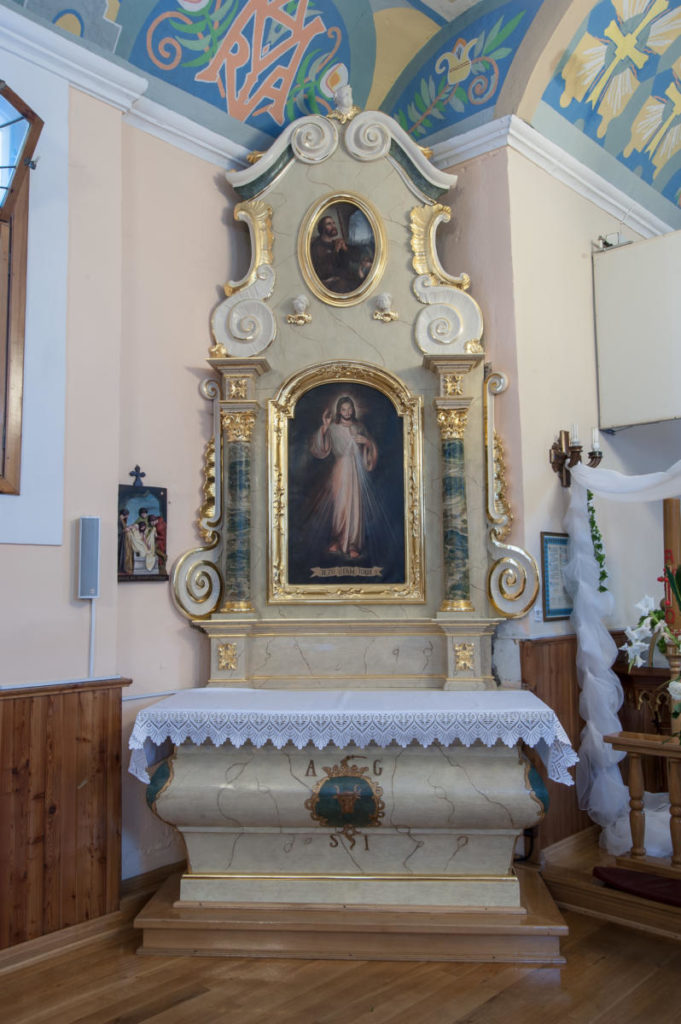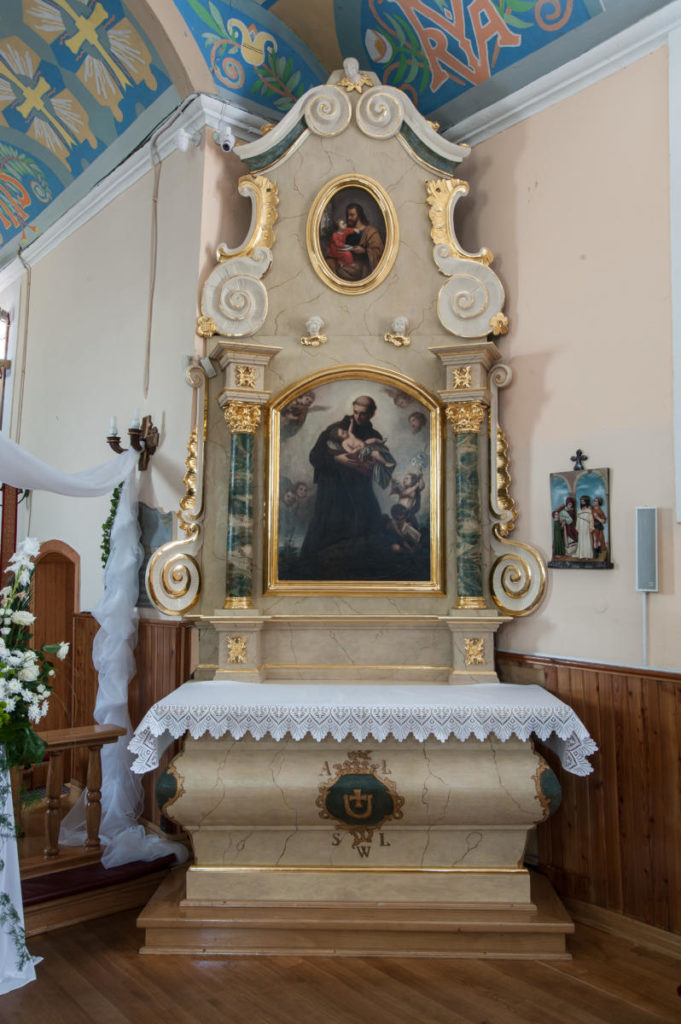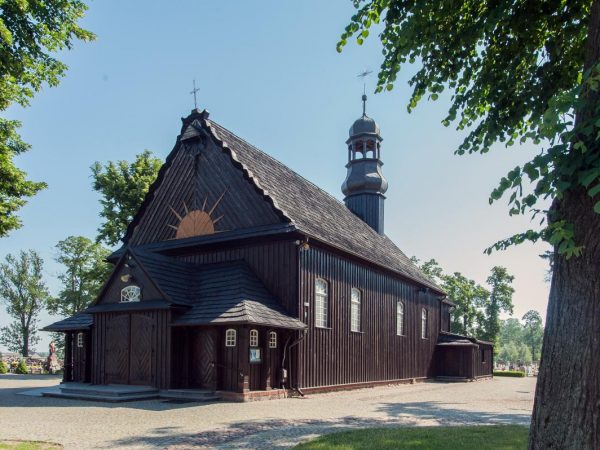
Church of The Nativity of the Saint Virgin Mary in Ociąż
RENOVATION OS THE SIDE ALTARS FROM THE CHURCH OF THE NATIVITY OF THE BLESSED VIRGIN MARY IN OCIĄŻ
Side altars: the right one dedicated to St. Stanislaus and the left dedicated to the Heart of Jesus are elements of furnishings of the wooden church of the Nativity of the Blessed Virgin Mary in Ociąż. They were made at the end of the 18th century in the rococo style. Their condition was satisfactory, however, previous sloppy repairs of losses and gaping wood joints could be seen. A lack of some decorative elements is easily noticeable, like e.g. in the crowning cornices where small details which are missing is clearly seen. The gilding done with schlagmetal had gone matt and had been stained. The oil canvass paintings were in good condition, but with visible smudges of the front, varnish had gone dark and degenerated.

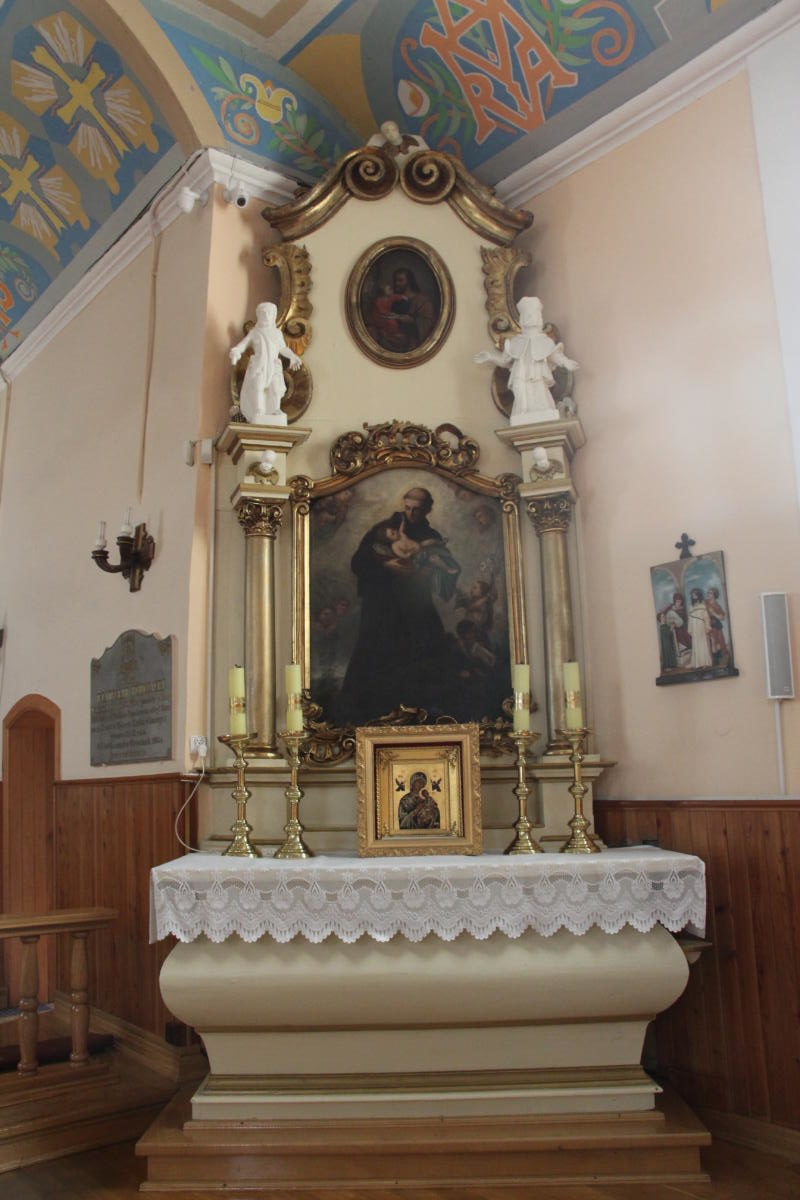
The main aim of the renovation was to eliminate the causes of damage and restore a good technical state to the altars as well as to restore in the highest degree possible their original aesthetic values.
When they were photographically documented and primarily cleaned, the altars were disassembled and moved to the renovation workshop. Their surface and all elements were cleaned from dirt not connected with the ground.



The tests were made in order to establish the stratigraphy of the objects, the technology and technique of their construction. Sterilisation and disinfection were done with a product with an ongoing and preventive effect, which destroys insects and wood parasites, at the same time protects from fungi and mould, with the use of jet grouting. Oil repaiting were ablated with a product for removal of oil coatings. Next, impregnation was used to reinforce and strengthen weakened wood.
Construction elements were filled with wood, new fragments of the curtain in the crowning with linden wood. The construction of the altar was supported from the back with the use of stainless metal bands attached with stainless screws. Missing elements of the sculptural form and small losses were reconstructed with epoxy resin.
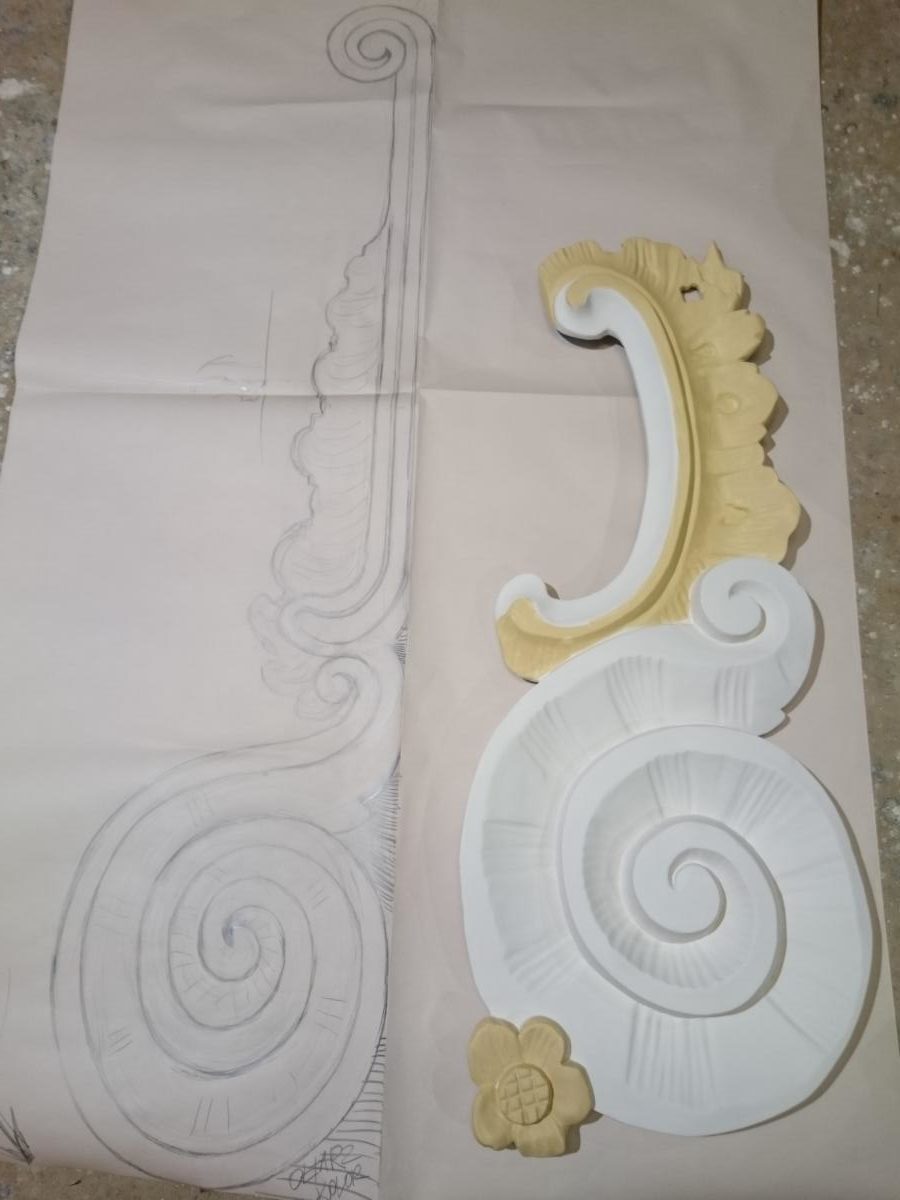

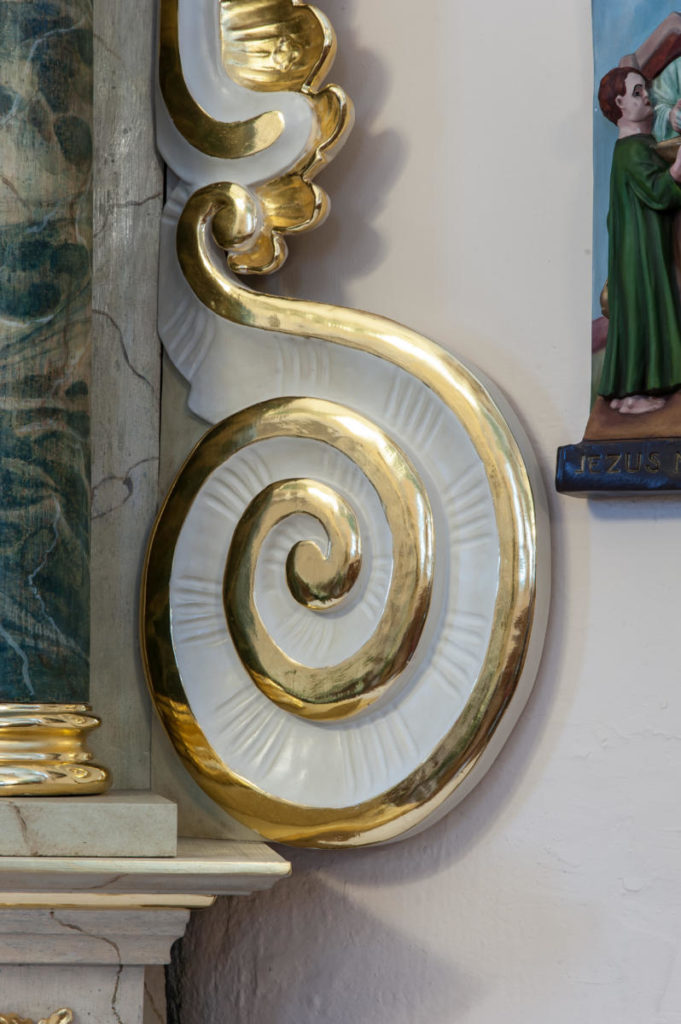

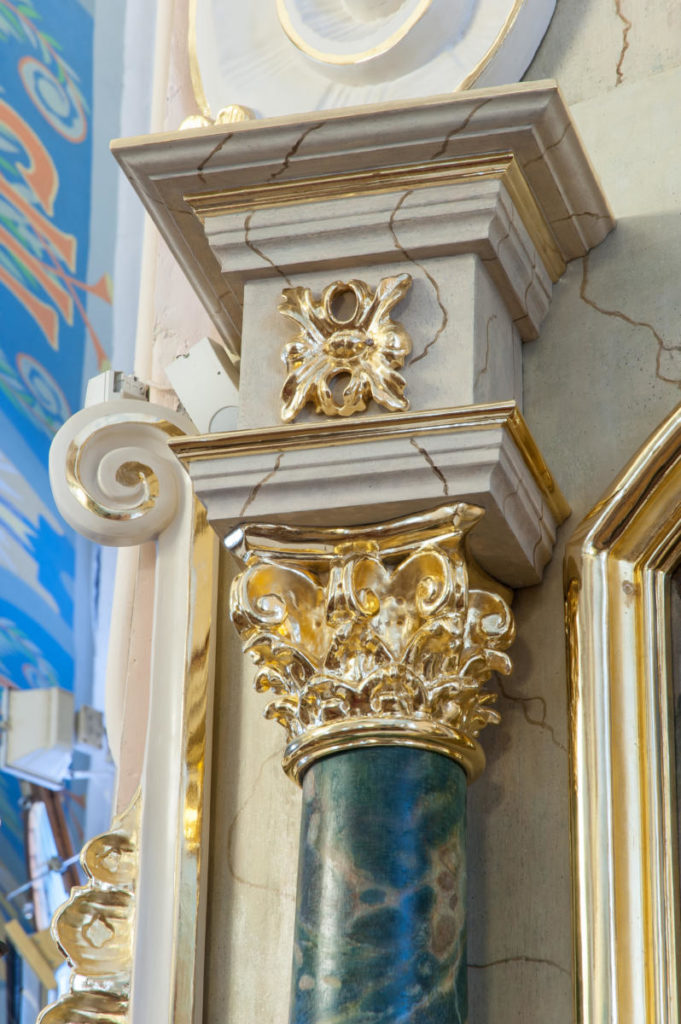
In the next stage technological retouches were done. Losses of mortar were filled with chalk-adhesive mortar applied in layers, and smaller losses with an acrylic render based on adhesive. Then it was refined when dry with the use of sandpaper and flannel.
Losses of the paint layer were unified in terms of colour (mimietically) with adhesive paint with colouring agents after mediating varnish was applied. In the next step, losses o gilding were reconstructed with leaf gold applied on bole. Silvering were secured with varnish and sealing waxes on the base of shellac and spirit-based wood stains. Polychromy and monochromy were protected with varnish which aim was to create a protective coating against atmospheric conditions and mechanical damage and to enhance aesthetic effect.
Full renovation of paintings was completed. Doubling of the main painting was done with the use new canvas and wax-resin paste. Degraded varnish was ablated, the losses of the paint layer were filled. The painting and the marbleization was protected with the final varnish with satin finish.
In the last stage, the altars were reassembled in their place in the church and the descriptive and photographic documentation was completed.
